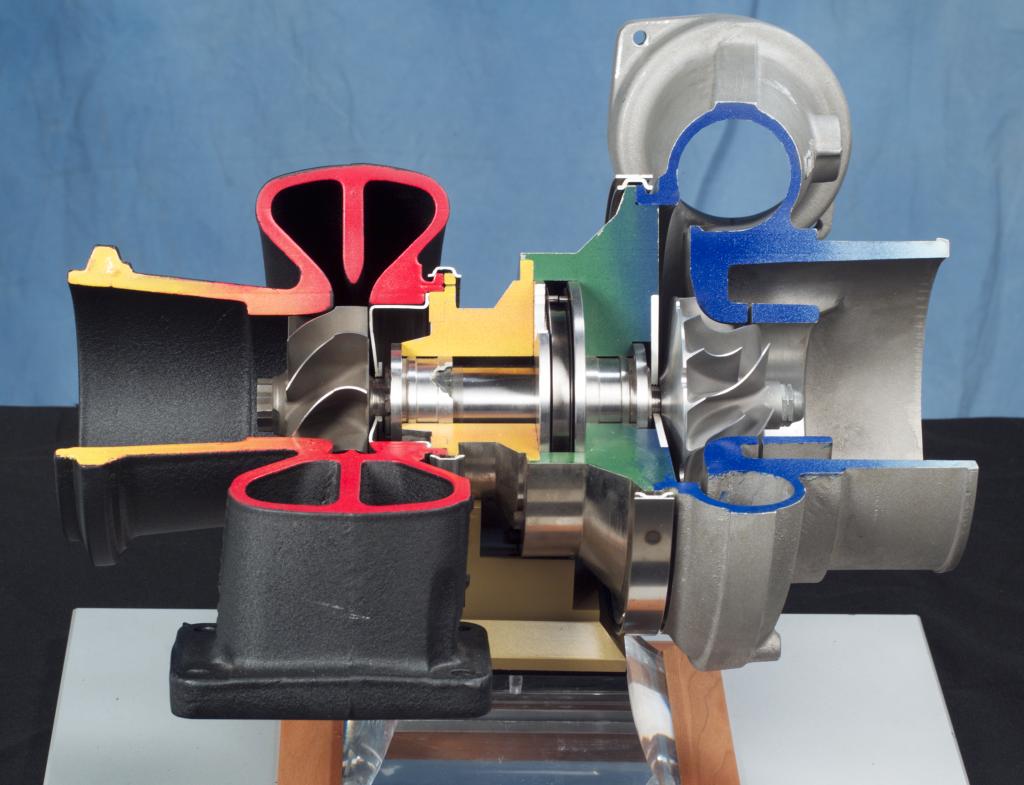A turbocharger, often shortened to just "turbo", is a mechanical component that forces more air into the engine intake by means of a turbine powered by the engine's exhaust. It is a well-known and popular way to get more power from an engine because of how effective it is at doing so.
Working on the fact that heat expands, exhaust gasses (which have been heated through combustion in the engine) power a turbine which has a similar design on the intake side so that exhaust-driven turbine blows air forcefully into the engine. Because the pistons don't have to rely on each other's power strokes to draw in air, and the air coming in has more pressure (especially when cooled by an intercooler), the engine is able to generate considerably more power.


Pictured above is the cutaway of a Turbocharger. The side has blue coloring while the exhaust side is red. Both sides have different propeller/impeller designs for maximum air flow efficency.
Pictured at the right is a turbocharger boost guage. This lets the driver/passengers know how much boost pressure is being made, and the area marked in red is an unsafe level of pressure which may damage engine parts. The guage also measures vacuum pressures which can build up. The guage pictured here is mounted in one of the window/door pillars, but it can be placed in the dashboard as well.
Sometimes a turbo can improve fuel efficency. This only occurs when there is no forced induction effect and the turbo only changes air flow patterns to favor better fuel atomization.
Variable Vane Turbochargers
An advanced type of turbocharger, the variable vane turbo, is able to provide large amounts of power at both high and low RPM levels because of its variable geometry. A section of the turbo is able to slide in and out to allow changes in air flow dynamics, speed, and pressure.
- Turbochargers Versus Superchargers
- Turbo Lag
- Intercooler
- Intake
- Exhaust
- Forced Induction
- Superchargers
